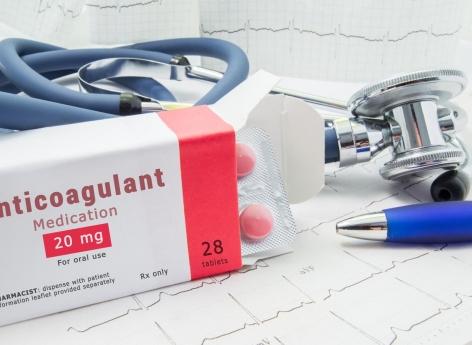THE ESSENTIAL
- For Pr Atul Pathak, head of the cardiology service at the Princess Grace Hospital in Monaco, anticoagulants are “the mainstay of the management of atrial fibrillation”.
- They are more effective than antivitamins K, they also have the advantage of not having any contraindications, even if special precautions must be taken in patients suffering in addition to coronary heart disease, renal failure or in elderly patients.
- They also significantly reduce the risk of embolism and the risk of cerebral hemorrhage.
–
Also called auricular, la fibrillation atriale is the most common heart disorder in adults after 40 years. It is characterized by an acceleration and an irregular heartbeat, due to the dysfunction of the atria of the heart, which ensure blood circulation: the latter can no longer properly evacuate the blood to the heart ventricles. There is then a stagnation of blood in the heart, which increases the risk of clots forming which, if transported in the vessels, can cause hemorrhages or embolisms. The risk of cerebrovascular accident (stroke) is also important, since clots can migrate to the vessels of the brain.
There are many ways to manage atrial fibrillation, in particular taking anticoagulants, as explained to us by Prof. Atul Pathak, head of the cardiology service at the Princess Grace hospital in Monaco. For the latter, “the prescription of an anticoagulant is a key element in the management of this arrhythmia “. In the context of atrial fibrillation, two parameters must be taken into account: the management of the heart rate and the management of the thrombotic risk, specifies the cardiologist.
When are anticoagulants prescribed?
In view of the latest recommendations, oral anticoagulants are prescribed as a first-line treatment in the management of atrial fibrillation. These new drugs have many advantages, among which “greater efficacy in certain population subtypes compared to AVKs (vitamin K antagonists)”, explains Prof. Pathak. They also have the advantage of being practical since we “can do without the sacrosanct dosage of TP and INR (prothrombin rate and International Normalized Ratio, which are indicators of blood coagulation, editor’s note)”.
What are the precautions to take?
However, this class of drugs requires a number of precautions. “since each event that will be added to atrial fibrillation can sometimes constitute a risk situation by the aggregate of drugs”. Professor Pathak takes the example of a patient who has atrial fibrillation and who is coronary artery, and who will therefore combine AOD (direct oral anticoagulants) and diet when there is platelet aggregation. “The sum of these two anticoagulant and anti-aggregating effects increases the risk of hemorrhage”, warns the specialist, who notes that these are not, however, contraindications. “We realized that sometimes the combination of these two drugs, even if it increases the risk of bleeding, still protects the patient. But it is often a precaution of use: in a certain number of patients, we will be vigilant about the risk of bleeding, we will adapt the dose, we will strengthen monitoring.And in the long term, these DOAs are so effective that when the acute event is behind us, we can even stop prescribing the antiaggregant. and protect her patient who has stable coronary artery disease only with an anticoagulant. “
The risk of renal failure is also mentioned by Prof. Pathak. “We know that when a patient has a creatinine clearance below 30 ml per minute, the warnings are activated.” This can be monitoring, adaptation of anticoagulant therapy, and sometimes a return to VKA.
Finally, continues the cardiologist, the third case which requires special vigilance in the anticoagulant treatment and when the patients are elderly “because they can combine the two other comorbidities what are renal failure or coronary artery disease “.
How long is the prescription of anticoagulants?
The prescription of direct oral anticoagulants is done “according to the management of the arrhythmia” : complex, simple, if treated by electrical cardioversion, chemical cardioversion or ablation. “It is the monitoring of the arrhythmia and the environment around it that will condition the longevity of the prescription of AOD”, sums up Professor Pathak, who specifies that anticoagulant treatment is not easily stopped. “You have to make sure that the treatment has worked, that the patient does not relapse. Or, in the case of someone whose embolic risk remains persistent, to make the decision to maintain the prescription of these DOAs for the long term. . “
“DOACs are drugs that we take every day, but the life of a patient can be punctuated by voluntary or involuntary interruptions of treatment. (…) Today, taking these drugs makes it possible to better manage the perioperative situation with controlled, scheduled stops, which do not necessarily require relays by other drugs. “
In conclusion, these DOACs have been proven to be effective, reducing the embolic risk by 10 to 25%, but also minimizing the risk of cerebral hemorrhage, which is difficult to access and therefore curable.
<!–
Ce sujet vous intéresse ? Venez en discuter sur notre forum !
–



